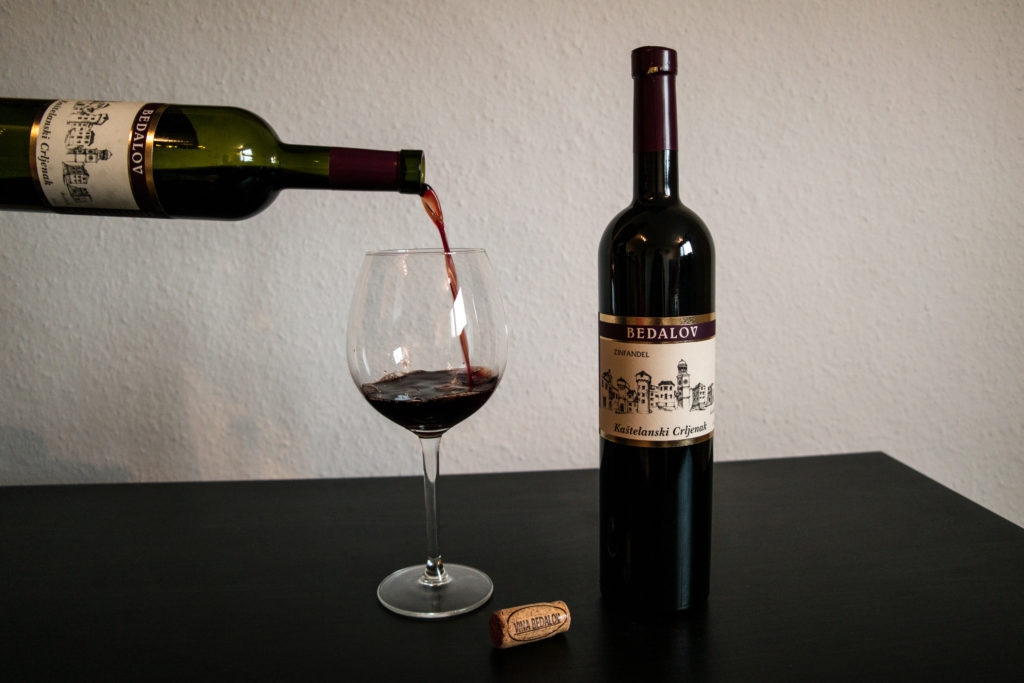Continuing our look at the indigenous grapes of Croatia, perhaps the most famous one of all, Tribidrag (Crljenak Kaštelanski), the original Zinfandel.
Crljenak Kaštelanski is probably the most famous indigenous Croatian wine in the world. Of course, not under that name – I mean, who can pronounce it at all, if they called it that it would be very unpopular. So, in the US they call it something else: Zinfandel. In Italy, a third name: Primitivo. In some places in Croatia, it has a local name of Tribidrag (or Pribidrag), and in neighbouring Montenegro they call it Kratošija. It was grown in Croatia ever since they started making wine here, and there are written records from the 15th century, where winemaking out of Tribidrag grapes is described on islands of Hvar and Vis. In the past it was the most abundant red grape variety in Dalmatia, and the quality of its wine and relatively high and regular yields were probably the reasons why it was taken to Italy in the 18th century.
Jancis Robinson, wine critic and book author described by Decanter magazine as ‘the most respected wine critic and journalist in the world’, co-authored the book Wine Grapes, the first book in English to introduce Tribidrag as the prime name for this variety. Her logic in deciding that Tribidrag should be used as the prime name for the variety is that the oldest name gets the title! While the first written reference to the name Primitivo dates from 1799 and to Zinfandel from 1837, the first reference to Tribidrag dates all the way back to the 15th century, so that’s what she says everyone should be using for the variety!
It got its Italian name, Primitivo, because it ripens much earlier than the other varieties that were grown in Apulia when Tribidrag was introduced (primo – early). It made its way to the United States via Vienna, Austria, which partially explains the name used there, Zinfandel, which sounds oddly Germanic, and is a result of mix-up of several varieties being shipped at the same time. On the east coast the variety was not very successful, but it took a bit of Gold rush fever to get it over to the west coast, where it was a huge success and within few decades it was the most abundant wine in the west coast vineyards at the end of 19th century. In Croatia, however, it was caught in the downward spiral, because of the phylloxera epidemic in the late 19th century, as well as its propensity to powdery mildew and other diseases.
It was rapidly replaced by other red varieties in the south of Dalmatia, mostly very similar variety Plavac Mali that was much less prone to disease. So, by the end of the twentieth century, when scientists were attempting to fully resolve genetic origin of Zinfandel, Plavac Mali, Primitivo and their linkage, the group led by dr. Carole Meredith from the University of Davis, California was able to find about a dozen vines that were genetically confirmed to be an exact match to already previously matched Zinfandel and Primitivo! The find took place in Kaštela, at an old vineyard, where those several vines were mixed with other varieties and it was conclusively proven that Tribidrag is actually a parent to Plavac Mali, that took its position in the Dalmatian vineyards. After that find, the variety has been reintroduced into vineyards in Croatia, while still being researched to create new clones without viral disease that could be transferred to Italy and California.
As already mentioned, Tribidrag ripens rather early, needs less sunny hours than its child Plavac Mali to create high sugars and high acids, and the wine is wonderfully deep red, with lower tannins than Plavac Mali. It is similar to Plavac, especially when it’s grown on similar locations in Croatia, has berries and spices aromas, and should also be served at around 18 °C, accompanying dark red meat dishes, game and even tuna steaks. Several Croatian winemakers have recently started producing and selling Tribidrag wine, although their vineyards mostly contain Italian seedlings, and in the future we expect to see much more authentic Croatian clones being cultivated. Also, in California most Zin is made into a rose wine (so-called white Zin), and we are yet to see if the same attempts will prove successful in Dalmatia. South-Dalmatian Tribidrag has high sugar content, so it is reasonable to believe it could produce high-quality dessert wines.
For now, if you get a chance to taste and buy Tribidrag produced by one of the wineries in the original Kaštela area where Crljenak Kaštelanski gets its name from, you will be drinking the original Zin. Kaštela roducers are Bedalov, Vuina, Krolo and Radunić. Others starting to produce Tribidrag include Stina winery on Brač, Zlatan Crljenak grown on Biokovo mountain on Dalmatian mainland, Kairos Crljenak by Vinski Dvori from Trogir area, Zinfandel Benmosche by a winemaker from Pelješac (Marija Mrgudić) and her American partner – thus the American name for a wine made from grapes grown in Pelješac!, Dubrovački podrumi winery, go for it. Also, it can be found under the name Tribidrag produced by the Rizman winery in Neretva area, Mimica/House of tha Happy Man from Omiš and Grabovac winery in Imotski. So, if you are choosing a wine to take home from Croatia as a gift to someone, consider a bottle of Tribidrag: it will go great with a steak or any dark-meat dish, and it will give you a chance to tell the story of how old Croatian wine variety is one of the most abundant varieties in California, and how that was discovered on the sample of less-than-dozen grapes!










